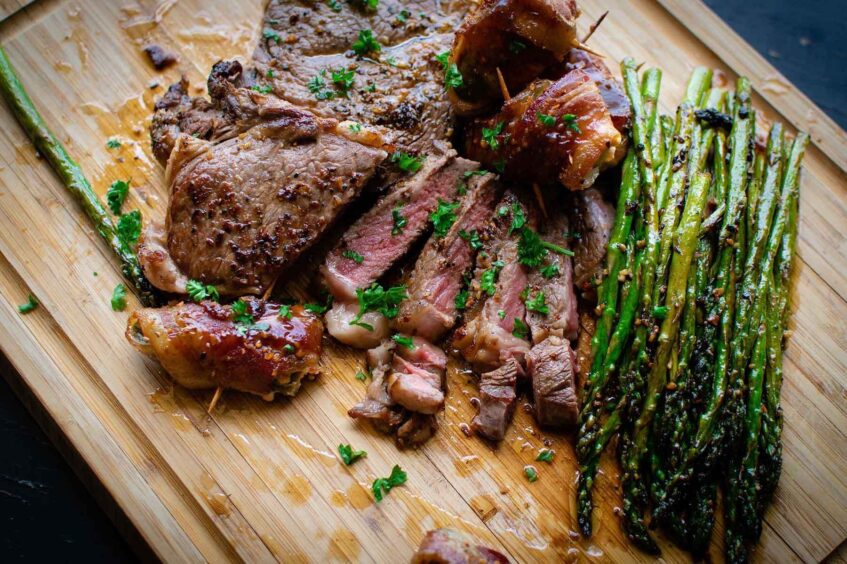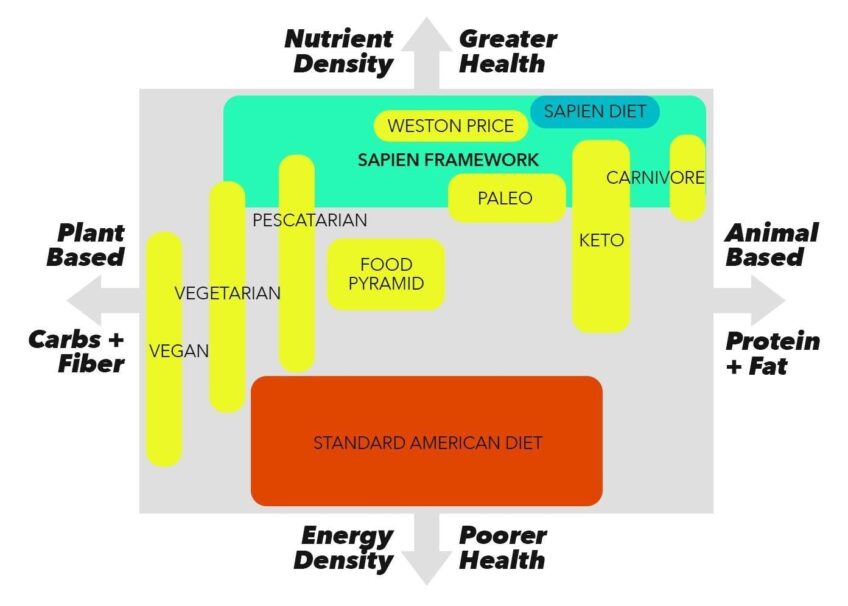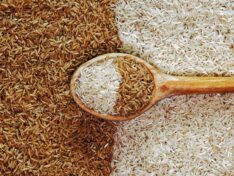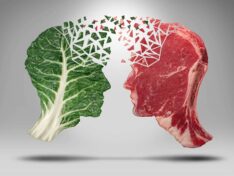Paleo vs. Keto: A Simple Guide - Which is Right For You?
Both keto and paleo are phenomenal ways of eating for your health -- this article helps to simply the differences between these nutritional styles.

Looking at me now, you would have no idea I was unhappy, in poor physical shape, and borderline depressed. I've tried many diet variations over my life, including vegan.
Now, I am proud of what I have achieved, and I will happily show off my body. I was recently able to spend six months in Thailand, learning Muay Thai and eating keto. Most importantly, I have never felt better.
While animal-based is the diet I have chosen to live by, I have tried both the Paleo and Keto extensively, and they both work well.
This article is not an article recommending one or the other. This is an article to show you how each of the eating styles work, respectively.
As with all diets, the most important thing to consider is your ability to stick to it. This nutritional guide will outline the fundamental principles behind both and allow you to make an informed decision.
Living with optimum health allows you to live your best life, and there are a lot of factors that go into a fulfilling, healthy lifestyle.
It is no good having tunnel vision when it comes to your goals. Along my journey, I learned that by focusing solely on "feel-good foods," I made myself ill and left myself in a worse position than when I started.
A diet, better defined as a WOE (way of eating), should be designed so that you can optimize your body and have it working as efficiently as possible.
To reach your maximum potential, you must have a holistic approach. You need to consider factors such as longevity, brain function, bone density, and enhanced central nervous systems and endocrine systems. Only by optimizing all of these can you have the body and life you want.
Lab Testing
Before diving into the differences between these ways of eating, I want to talk briefly about testing you might want to consider.
As I frequently mention throughout my articles, please note I'm not a medical practitioner.
And, if you're simply looking for the differences between these two "diets," you can move on to the next sections.
With all that being said, there are specific lab tests that are immensely helpful in determining your body's current chemistry.
Inflammation Markers
To put it simply, high inflammation is a sign that your body is breaking down faster than it's repairing.
Tests to consider and values to look for:
- C-reactive protein (CRP) below 1
- Homocysteine below 7.5-8
- Low Fibrinogen
Lipid Markers
While there are many new advancements in this area by "carnivore diet" advocates such as Dr. Paul Saladino and Dr. Shawn Baker, I still think it's a great idea to know where your lipid levels stand.
Test to consider in this category:
- Triglyceride-to-HDL Ratio ideally around 1-2:1
- Total Cholesterol-to-HDL Ratio less than 4:1
- LDL particle size large particle size is good, small is bad
These are standard bloodwork tests you can ask your primary doctor about.
The Paleo Diet
The underlying theory of the paleo diet is the principle that it promotes optimal health. We should only be eating foods that were available to early humans. Hence the nickname "the caveman diet."
One of the core theories behind the paleo or caveman diet is that our bodies have evolved to eat certain foods and that the highly processed and modified foods that make up the modern diet are damaging.
Nowadays, there is a lot of competition among companies that produce the food we eat to create the tastiest possible food at the lowest price. Unfortunately, this is achieved through a massive injection of sugar, salt, and seed oils.
Food is also transported across cities, countries, and even continents. Because of this, we need to be able to keep it fresh through preservatives, which change the nutritional composition. In the end, the consumer is left with something that contains little nutrition and many ingredients that are detrimental to health.
To combat this, the paleo diet avoids processed foods. Instead, you mimic the style of eating that a paleolithic human or hunter-gather would have access to. Don't worry, and this does not mean that you have to go out into the woods and hunt for your food, only that you need to be more mindful of what you pick up from the supermarket and be aware of all of the ingredients. Avoiding processed foods and preferring to focus on food with high nutritional value will better support your body's natural digestion, biological function, and overall health.
Processed sugar, grains, legumes, and most sources of dairy are all foods that are eliminated as options on the paleo diet.
Foods that are allowed on the paleo diet include:
- Fish and Meat
- Seeds and Nuts
- Eggs
- Most vegetables
- Fruits
- Certain oils and fats such as olive/avocado/coconut oil, ghee/butter, lard, and tallow
- Sweeteners that have gone through a minimal amount of processing – e.g., maple syrup, raw honey, coconut sugar, raw stevia
In summary, the "caveman diet" is a lifestyle that focuses on whole foods and eliminating processed foods, grains, and legumes to improve health.
Paleo and Building Muscle
The Paleo diet, similar to the keto diet, involves eating a lot of protein, which is great for building and maintaining muscle. Eggs and meat both contain the highest amounts of complete protein. If you are hoping to gain muscle through the paleo diet, then you should ensure you are eating enough protein and fats.
Also, you will want to distribute your protein throughout the day, ensuring that you consume it in every meal.
The Keto Diet
Social media is buzzing about the keto diet for a good reason. With incredible effects on weight loss and body composition, as well as a myriad of health benefits, you may be wondering what exactly the keto diet is.
When you follow a ketogenic diet, your body will produce ketones. Ketones are chemicals metabolized by your liver. When you don't have enough insulin in your body to turn sugar into energy, your body will produce ketones.
As your body needs a consistent energy source, it relies on energy from what you eat. If it does not have enough sugar, which is broken down into fuel for the brain, it will use stored fat. Your liver then turns this fat into ketones and sends it into your blood and straight to your brain.
When your body begins to prioritize these ketones over the glucose found in carbs and sugars, it enters a metabolic state. This metabolic state is called Ketosis.
Ketones are actually your brain's preferred form of energy as they are a lot more efficient as a fuel source than the glucose in carbohydrates. It is also a more efficient fuel for your brain, which means that Ketosis is a high-performance energy state that also improves cognitive ability.
The main goal of a ketogenic diet is to induce this metabolic state of Ketosis. This is achieved through a specific change to dietary macronutrients, specifically low-carb and high-fat.
A Typical ketogenic macronutrient breakdown would be similar to this:
- Fat: 60-80%
- Protein: 20-30%
- Carbohydrates: 5-10%
This means that out of the food you eat during the day, 5% of your intake should come from carbs, 25 % should come from protein, and the rest, the other 70%, should come from healthy fats.
Ketosis is a high-performance energy state that can only be induced through strict control of macronutrient intake. Too much protein, carbohydrates, or even natural sugars like fructose will kick you out of this state.
Ketosis and Building Muscle
An extremely high protein meal, like that of a usual gym-goer, will kick you out of Ketosis; this shouldn't be viewed as a negative though.
Ketosis is just one tool we have at our disposal. So, after a hard day of training at the gym, your body needs protein to repair itself. While eating high amounts of protein can kick you out of Ketosis. It is, however, necessary for the proper repair and growth of your muscles.
This is why the combination of intermittent fasting and keto is so popular, and implementing it into your lifestyle can help you optimize your day-to-day routine.
The idea behind this combination is that you can be in the high-performance energy state of Ketosis all day without having to sacrifice your body's repair and muscle growth by limiting the amount of protein you eat.
Intermittent fasting naturally spikes your body's growth hormone and testosterone, meaning you are in a far more anabolic state than if you ate all day. As a result, you are getting even more out of your physical activities than usual, and after a high-protein meal, you will repair and grow muscles a lot more efficiently, minimizing muscle fatigue the next day.
Keto and Paleo: A Comparison
Both the keto and paleo diets focus on whole-food sources for nutrition. Whole food is defined as food that has undertaken as little processing as possible by the time it reaches your plate. Both these diets strongly suggest eliminating all processed foods and replacing them with whole foods.
| Food | Keto | Paleo |
|---|---|---|
| Unprocessed Meat & Seafood | Ok | Ok |
| Eggs | Ok | Ok |
| Healthy Fats | Ok | Ok |
| Dairy | Ok | Ok |
| Vegetables | Ok | Ok |
| Salt | Ok | Ok |
| Starchy Vegetables (ie. potatoes) | No | Ok |
| Most Fruits | No | Ok |
| Sugar-free Sweeteners | Ok | No |
| Natural Sweeteners (ie. honey) | No | Ok |
| Alcohol | No | Some |
| Refined Carbs | No | No |
| Grains | No | No |
| Legumes | No | No |
| Processed Foods | No | No |
| White & Brown Sugar | No | No |
Both paleo and keto firmly exclude processed fats, sweeteners, and unhealthy seed oils.
For salt, I only recommend using Redmond Real Salt, as it's the most natural and unrefined. Kosher salt is an ok second. Stay completely away from iodized salt.
The quality of your ingredients also plays a massive role in how healthy it is for you. For example, animals that are fed soy carry significantly more Estrogen than grass-fed or corn-fed animals. Estrogen is a female hormone and is massively detrimental to health for males, especially, and should be avoided as much as possible.
Paleo and keto diets also discourage the eating of legumes and grains. With the paleo diet, the reasoning is based on the idea that legumes and grains were not likely part of paleolithic humans' diets, and they also contain antinutrients. These antinutrients are compounds such as phytates and lectins and can be found in plant-based foods. These antinutrients interfere with how well your body can absorb nutrients and minerals and may cause distress to your digestive system when eaten in large amounts.
The keto diet advises against grains and most legumes as they have a high carbohydrate content, which will inevitably kick your body out of the state of Ketosis and stop it from being induced for a while.
Both these eating styles encourage eliminating the intake of added sugars, which also falls under avoiding processed foods. Paleo, however, is more flexible as unrefined sugar, such as maple syrup and honey, is still permitted. To stay in a state of Ketosis while following a keto diet, though, these have to be avoided as well.
Have you heard of the Sapien diet? Their framework helps tremendously to show a nutritional comparison.

In the case of healthy fats, both styles encourage the intake of these to achieve optimal health. Paleo isn't necessarily a high-fat diet but will promote the consumption of these to improve overall health. The ketogenic diet places a lot more emphasis on high fat as it is fat that is converted into ketones by the liver in the process of Ketosis. Healthy fats such as nuts, seeds, and fish and refined oils, e.g., coconut/avocado and olive oils, all have known benefits for the heart due to their mono- and polyunsaturated fat content. Both eating styles suggest avoiding trans-fat, which cannot be adequately digested by the body and are prevalent in highly processed and fast foods.
The popularity of keto and paleo diets is due to the notion that they are effective for weight loss. There is limited research that shows this in the long term; however, the research in the short term is promising.
A study that followed postmenopausal obese women that followed the paleo diet showed a 9% weight loss for six months and a 10.6% weight loss after 12 months. Some say this short-term weight loss is because the low-carb, high-fat intake may be due to decreased appetite and, therefore, fewer calories consumed.
The low carb, low sugar, and low natural sugar intake, such as fructose, mean that people following a ketogenic diet have insulin spikes less often than those that consume these types of food. Insulin is our most powerful anabolic hormone, meaning that high insulin will result in more muscle.
My Thoughts?
Both the keto and paleo "diets" or way-of-eating styles can be healthy to follow, but it depends on how they are used and properly implemented. They are advanced-level eating styles and, if followed incorrectly, can have some serious side effects.
The Paleo diet has more flexibility when it comes to food options, which can mean it is easier to follow as a long-term lifestyle. However, with the keto diet, you still get the many benefits of Ketosis without completely limiting non-keto-friendly foods, so long as you are implementing intermittent fasting.
I personally lean more toward the keto diet with intermittent fasting. This means that my diet consists of low-carb and low-sugar. However, when I do eat, I eat high protein to compensate for the amount of training I do.
Although this temporarily kicks me out of Ketosis, it does work for me. The attractive thing about the state of Ketosis is the high-performance energy state it puts you in, which means during the day, when you are most active when you want to be in Ketosis, and when you are home and relaxing when you should be repairing.
I have to add that changing my way of eating to this framework has exponentially increased my overall well-being regarding mood, sleep, and much more. As I lean into these eating styles, I find myself crossing into a carnivore diet (more on that in another article).
A healthy lifestyle is about balance, and these diets should not be all-consuming. However, they are both great diets, and the underlying principles and theories of both can be taken on board to tailor an adequate diet.
Tony Lee, MS, RD
Tony Lee, RD, MS, is a highly qualified and accomplished Registered Dietitian with a Master’s Degree in Nutrition Sciences. Tony brings over two decades of experience in dietetics, specializing in sports nutrition. Interests include studying all aspects of wellness, fitness, genetics, and peak health performance.














